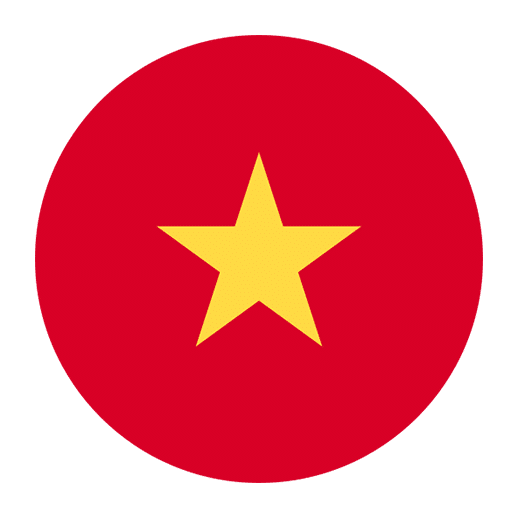Vietnamese, as the official language of Vietnam, holds a pivotal role in the country’s local media landscape. With a rich cultural heritage and a rapidly modernizing society, Vietnam’s media scene is a fascinating blend of traditional and contemporary influences. For language learners, understanding the role of Vietnamese in local media can provide invaluable insights into the language’s evolution, usage, and cultural significance.
Historical Context
To appreciate the current role of Vietnamese in local media, it’s essential to delve into its historical context. The Vietnamese language has undergone significant transformations over the centuries. Originally influenced by Chinese characters, Vietnamese developed its own script, known as chữ Nôm, during the 13th century. However, it wasn’t until the 17th century that the modern Vietnamese script, quốc ngữ, emerged, thanks to the efforts of Jesuit missionaries who introduced the Latin alphabet.
During the French colonial period, quốc ngữ gained prominence as the medium of instruction and communication. This shift played a crucial role in unifying the Vietnamese people and fostering a sense of national identity. Today, quốc ngữ is the standard script used in all forms of communication, including local media.
The Evolution of Vietnamese Media
The evolution of Vietnamese media has closely mirrored the country’s socio-political landscape. In the early 20th century, newspapers became a powerful tool for disseminating information and fostering intellectual discussions. The first Vietnamese newspaper, Gia Định Báo, was published in 1865, marking the beginning of a vibrant print media culture.
During the struggle for independence from French colonial rule, newspapers and magazines played a vital role in mobilizing public opinion and promoting nationalist sentiments. Prominent publications like Tự Do and Nhân Dân provided a platform for intellectuals and activists to voice their opinions and advocate for freedom.
After the reunification of North and South Vietnam in 1975, the media landscape underwent significant changes. The state-controlled media became the primary source of information, and censorship was enforced to maintain political stability. However, with the advent of economic reforms in the late 1980s, known as Đổi Mới, the media began to experience greater freedom and diversity.
Print Media
Print media, including newspapers and magazines, continues to play a significant role in Vietnam’s media landscape. Major newspapers such as Tuổi Trẻ, Thanh Niên, and Nhân Dân provide comprehensive coverage of national and international news, politics, economics, and culture. These publications are widely read and trusted sources of information for millions of Vietnamese.
One notable aspect of Vietnamese print media is its emphasis on language and literature. Literary magazines like Văn Nghệ and Sông Hương showcase the works of contemporary Vietnamese writers, poets, and artists. These publications not only promote the Vietnamese language but also contribute to the preservation and development of the country’s literary heritage.
Television and Radio
Television and radio have become integral parts of Vietnamese daily life. The state-owned Vietnam Television (VTV) and Voice of Vietnam (VOV) dominate the broadcasting landscape, providing a wide range of programs in Vietnamese. VTV operates multiple channels, covering news, entertainment, education, and sports, while VOV offers radio programs in various languages, including Vietnamese, English, French, and Chinese.
Television dramas, known as phim truyền hình, are immensely popular in Vietnam. These dramas often reflect the country’s social issues, cultural values, and historical events. By watching Vietnamese television dramas, language learners can gain a deeper understanding of the language’s nuances, colloquialisms, and cultural references.
Digital Media and Social Networks
In recent years, digital media and social networks have revolutionized the way Vietnamese people consume and share information. Platforms like Zing News, VnExpress, and VietnamNet have become popular sources of news and entertainment. These online publications provide real-time updates, interactive features, and multimedia content, catering to the preferences of tech-savvy Vietnamese readers.
Social media platforms such as Facebook, YouTube, and TikTok have also gained immense popularity in Vietnam. Vietnamese netizens actively engage with these platforms, sharing their opinions, creating content, and participating in online communities. For language learners, these platforms offer a treasure trove of authentic language materials, including videos, articles, and discussions, providing opportunities to practice listening, reading, and writing in Vietnamese.
The Role of Vietnamese in Local Media
The role of Vietnamese in local media extends beyond mere communication. It serves as a vehicle for preserving cultural heritage, promoting national identity, and fostering social cohesion. Local media outlets play a crucial role in shaping public opinion, disseminating information, and reflecting the aspirations and concerns of the Vietnamese people.
Preserving Cultural Heritage
Vietnamese media plays a vital role in preserving and promoting the country’s rich cultural heritage. Traditional art forms such as ca trù (ceremonial singing), chèo (traditional opera), and cải lương (reformed opera) are often featured in television programs, radio shows, and online platforms. By showcasing these art forms, media outlets ensure that younger generations remain connected to their cultural roots and appreciate the beauty of Vietnamese traditions.
Moreover, local media actively promotes the Vietnamese language through various initiatives. Language programs, literature festivals, and poetry competitions are organized to encourage language learning and celebrate linguistic diversity. By highlighting the importance of the Vietnamese language, media outlets contribute to its preservation and development.
Promoting National Identity
Vietnamese media plays a crucial role in promoting national identity and fostering a sense of pride among the Vietnamese people. News programs, documentaries, and talk shows often highlight the achievements of Vietnamese individuals and communities, showcasing their contributions to various fields such as science, sports, and the arts.
In addition, media outlets play a significant role in shaping public perception of national events and historical milestones. Commemorative programs, historical documentaries, and patriotic songs are broadcasted during national holidays and significant anniversaries. These initiatives help instill a sense of national unity and pride, reinforcing the importance of the Vietnamese language as a symbol of national identity.
Fostering Social Cohesion
Vietnamese media serves as a platform for fostering social cohesion and addressing societal issues. Talk shows, panel discussions, and investigative journalism programs tackle topics such as poverty, education, healthcare, and environmental sustainability. By providing a platform for diverse voices and perspectives, media outlets facilitate dialogue and promote understanding among different segments of society.
Furthermore, local media plays a crucial role in raising awareness about social issues and advocating for positive change. Campaigns against corruption, domestic violence, and drug abuse are often spearheaded by media organizations. By highlighting these issues and providing a platform for discussion, media outlets contribute to the overall well-being of Vietnamese society.
Challenges and Opportunities
While Vietnamese media has made significant strides in recent years, it also faces several challenges and opportunities in the digital age.
Challenges
One of the primary challenges faced by Vietnamese media is the issue of press freedom. Despite the relative openness brought about by economic reforms, the state still exercises significant control over the media. Journalists and media organizations often face restrictions and censorship, limiting their ability to report on sensitive topics and hold those in power accountable.
Another challenge is the rapid proliferation of fake news and misinformation. With the rise of social media and digital platforms, false information can spread quickly, leading to confusion and mistrust among the public. Media organizations need to invest in fact-checking mechanisms and promote media literacy to combat this growing problem.
Opportunities
The digital age presents numerous opportunities for Vietnamese media to reach wider audiences and engage with diverse communities. Online platforms and social media provide a direct and interactive channel for media organizations to connect with their audience. By leveraging these platforms, media outlets can deliver timely and relevant content, engage in meaningful discussions, and build a loyal following.
Moreover, the increasing demand for Vietnamese language learning presents an opportunity for media organizations to cater to language learners. By creating language learning programs, producing bilingual content, and collaborating with educational institutions, media outlets can contribute to the promotion and dissemination of the Vietnamese language.
Language Learning Through Media
For language learners, media can be an invaluable resource for improving language skills and gaining cultural insights. Here are some effective strategies for using Vietnamese media to enhance language learning:
1. Watching Television Shows and Movies
Television shows and movies provide an immersive experience for language learners. By watching Vietnamese dramas, comedies, and documentaries, learners can improve their listening skills, expand their vocabulary, and familiarize themselves with colloquial expressions and cultural references. Subtitles can be used initially to aid comprehension, but gradually transitioning to watching without subtitles can enhance language proficiency.
2. Listening to Radio Programs and Podcasts
Radio programs and podcasts offer a convenient way to practice listening skills on the go. Vietnamese radio stations like VOV provide a wide range of programs, including news, interviews, and cultural discussions. Podcasts in Vietnamese cover various topics, from language learning to current affairs. Regularly listening to these programs can improve listening comprehension and expose learners to different accents and speech patterns.
3. Reading Newspapers and Online Articles
Reading newspapers and online articles is an excellent way to improve reading skills and stay informed about current events in Vietnam. Major newspapers like Tuổi Trẻ and Thanh Niên offer online editions with articles covering a wide range of topics. Language learners can start with simplified news articles and gradually progress to more complex texts. Highlighting unfamiliar words and phrases and looking up their meanings can expand vocabulary and improve reading comprehension.
4. Engaging with Social Media
Social media platforms provide a wealth of authentic language materials and opportunities for interaction. Following Vietnamese influencers, joining language learning groups, and participating in online discussions can expose learners to real-life language usage and cultural nuances. Commenting on posts, sharing opinions, and engaging in conversations with native speakers can enhance writing and communication skills.
5. Utilizing Language Learning Apps and Websites
Language learning apps and websites offer interactive exercises, vocabulary drills, and grammar lessons tailored to different proficiency levels. Platforms like Duolingo, Memrise, and HelloTalk provide comprehensive language learning resources, including audio recordings, flashcards, and language exchange opportunities. Combining these resources with exposure to Vietnamese media can create a well-rounded language learning experience.
Conclusion
The role of Vietnamese in local media is multifaceted and dynamic. From preserving cultural heritage to promoting national identity and fostering social cohesion, Vietnamese media plays a crucial role in shaping the country’s socio-cultural landscape. For language learners, engaging with Vietnamese media offers a unique opportunity to immerse themselves in the language, gain cultural insights, and enhance language skills. By leveraging the power of media, learners can embark on a rewarding journey of language acquisition and cultural exploration.

